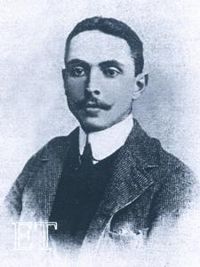Peerage of Scotland
Before being elevated to an earldom, George Leslie had already been created Lord Leslie in 1445, in the Peerage of Scotland. His grandson, the third Earl, succeeded his elder brother in March 1513 but was killed later that year at the Battle of Flodden on 9 September. His son, the fourth Earl, served as an Extraordinary Lord of Session and was notably tried for the murder of Cardinal Beaton, though he was ultimately acquitted.
The seventh Earl, a great-great-grandson of the fourth Earl, was a prominent political figure in Scotland. He served as Lord High Treasurer from 1663 to 1667 and as Lord Chancellor from 1667 to 1681. In 1663, he secured a new charter that regranted the earldom of Rothes and the lordship of Leslie (styled Lord Leslie and Ballenbreich) with a special remainder. This allowed succession, in the absence of male issue, to his eldest daughter Margaret Leslie, wife of Charles Hamilton, 5th Earl of Haddington, and to her male and female descendants. The charter explicitly stipulated that the earldoms of Rothes and Haddington should never merge.
In 1680, the Earl was further ennobled with several new titles in the Peerage of Scotland: Duke of Rothes, Marquess of Bambreich, Earl of Leslie, Viscount of Lugtoun, and Lord Auchmotie and Caskieberry. [2] These titles, however, were granted with remainder only to the heirs male of his body and became extinct upon his death in 1681, as he left no sons.
Under the 1663 charter, the earldom and lordship passed to his daughter Margaret Leslie, who became the eighth Countess of Rothes. Her husband, Lord Haddington, was succeeded in his own titles by their second son Thomas Hamilton (see Earl of Haddington). The Rothes titles passed to their eldest son John, who became the ninth Earl. He assumed the additional surname Leslie and served as a Scottish representative peer in the British House of Lords from 1708 to 1710.
The tenth Earl, his son, was a Lieutenant-General in the British Army and served as Commander-in-Chief of the Forces in Ireland. He was also a representative peer from 1723 to 1734 and again from 1747 to 1767. His son, the eleventh Earl, died unmarried and was succeeded by his eldest sister Jane Elizabeth, the twelfth Countess, despite a rival claim by their uncle Andrew Leslie. Jane Elizabeth married twice: first to George Raymond Evelyn, and then to Sir Lucas Pepys.
Her son by her first marriage, George William Evelyn Leslie, became the thirteenth Earl and served as a representative peer from 1812 to 1817. He adopted the surname Leslie in lieu of Evelyn. Upon his death, the title passed to his daughter Henrietta Anne, the fourteenth Countess, who married George Gwyther. Both adopted the surname Leslie, and their grandson became the sixteenth Earl, who died young and without issue, so the title passed to his sister Henrietta, the seventeenth Countess, who married the Hon. George Waldegrave, a younger son of William Waldegrave, 8th Earl Waldegrave. They had no children.
Henrietta was succeeded by her aunt Mary Elizabeth, the eighteenth Countess, the second daughter of the fourteenth Countess. She married Captain Martin Edward Haworth, who assumed the surname Leslie by Royal Licence in 1886. Their grandson, the nineteenth Earl, served as a Scottish representative peer from 1906 to 1923. His wife, Lucy Noël Martha Leslie, Countess of Rothes, became widely known as a survivor of the RMS Titanic disaster in 1912.
The twentieth Earl, their son, served as a representative peer from 1931 to 1959. Currently, the titles are held by his grandson, the twenty-second Earl of Rothes, who succeeded in 2005.
Baronage earldom
The baronage earldom of Rothes is first officially recorded in 1547. [3] Distinct from the peerage earldom, this title was a feudal dignity in the Baronage of Scotland, linked to territorial rights, jurisdiction, and land ownership.
On 19 October 1859, the title was formally reaffirmed by Queen Victoria in a charter granted to Henrietta, 17th Countess. The charter consolidated a range of feudal privileges — including markets, customs, rents, and the office of Sheriff of Fife — into a single territorial unit comprising the earldom and lordship of Rothes, the barony and burgh of Leslie, and other associated properties. [4]
After Henrietta's death, it did not pass to Mary Elizabeth, but instead followed the disposition of the underlying land. The dignity had earlier been put into trust and was subsequently succeeded by Sir William Crundall in 1919. [5] It remained in the Crundall family until 2004.
In that year, the earldom, alongside the Barony of Leslie, were made available for reassignation, reportedly for a consideration of £150,000, [6] and was subsequently succeeded by Sir Christopher Ondaatje, a noted explorer and philanthropist. [7]
Currently, the title, together with the hereditary sheriffdom of Fife, is held by Swiss national Dario Item, who succeeded in 2024 by way of assignation. [8]













